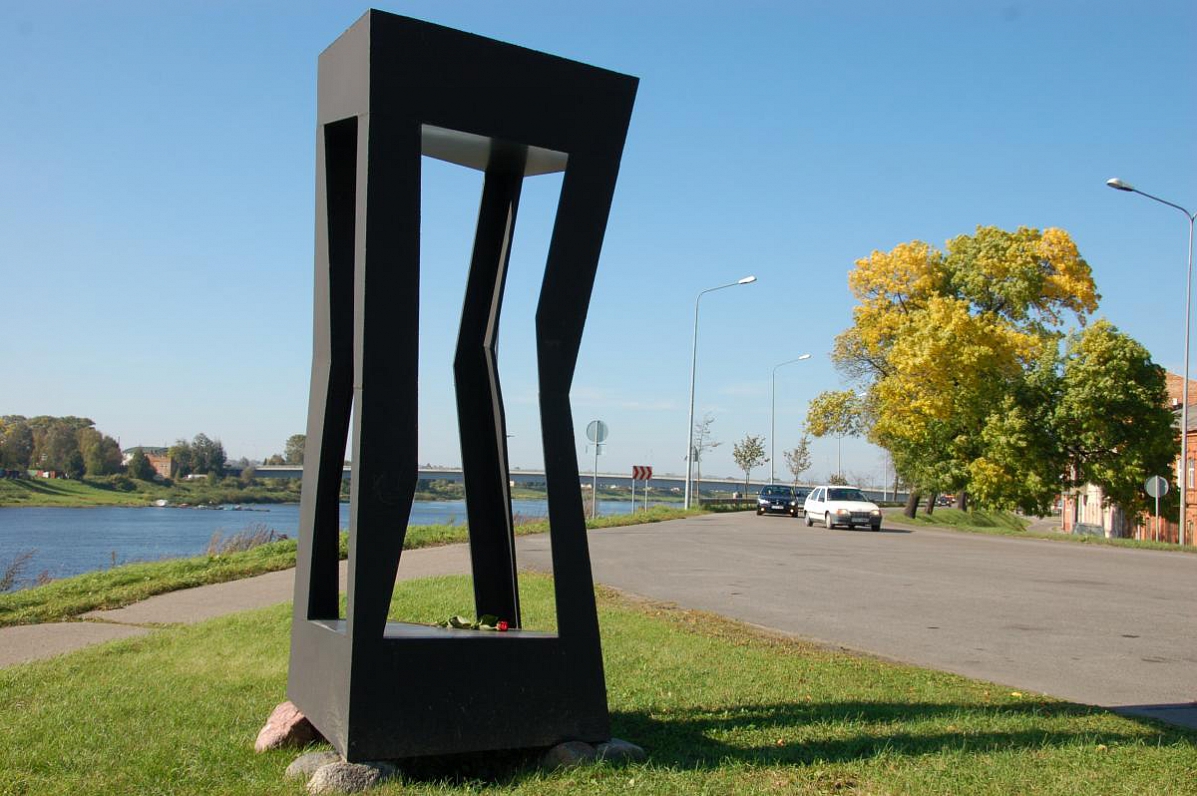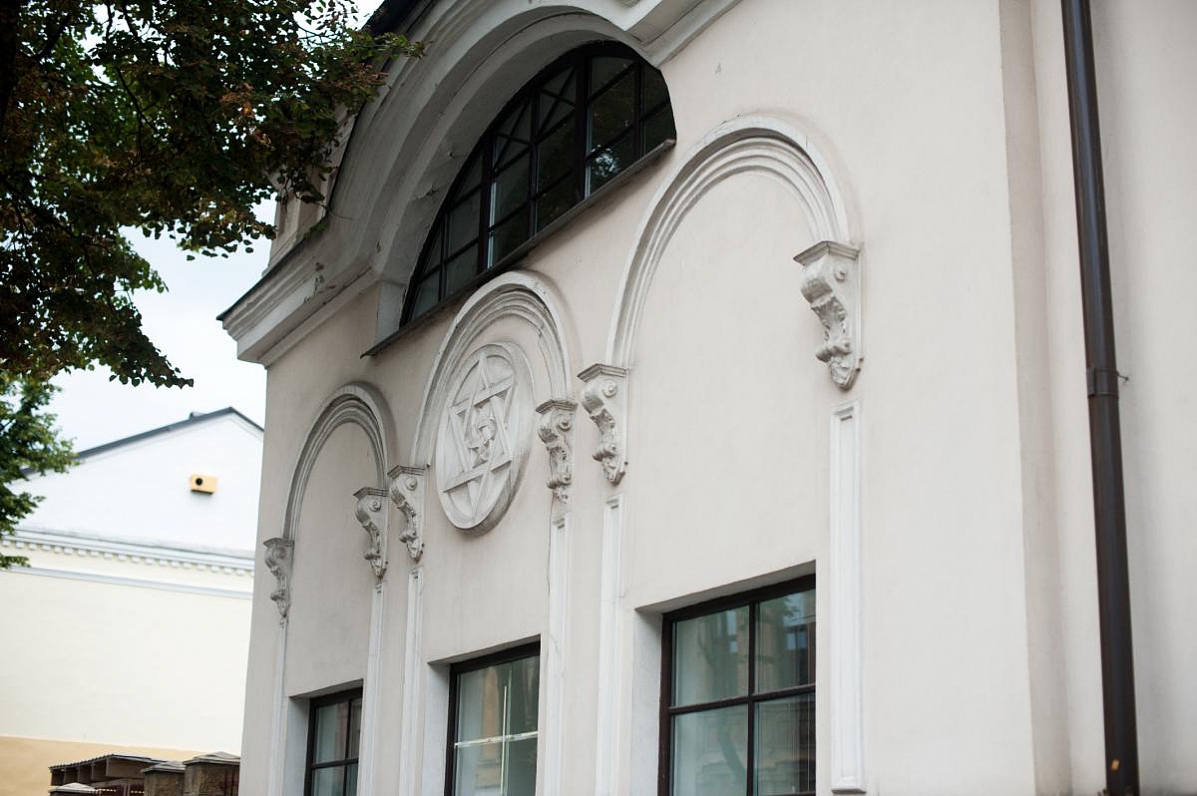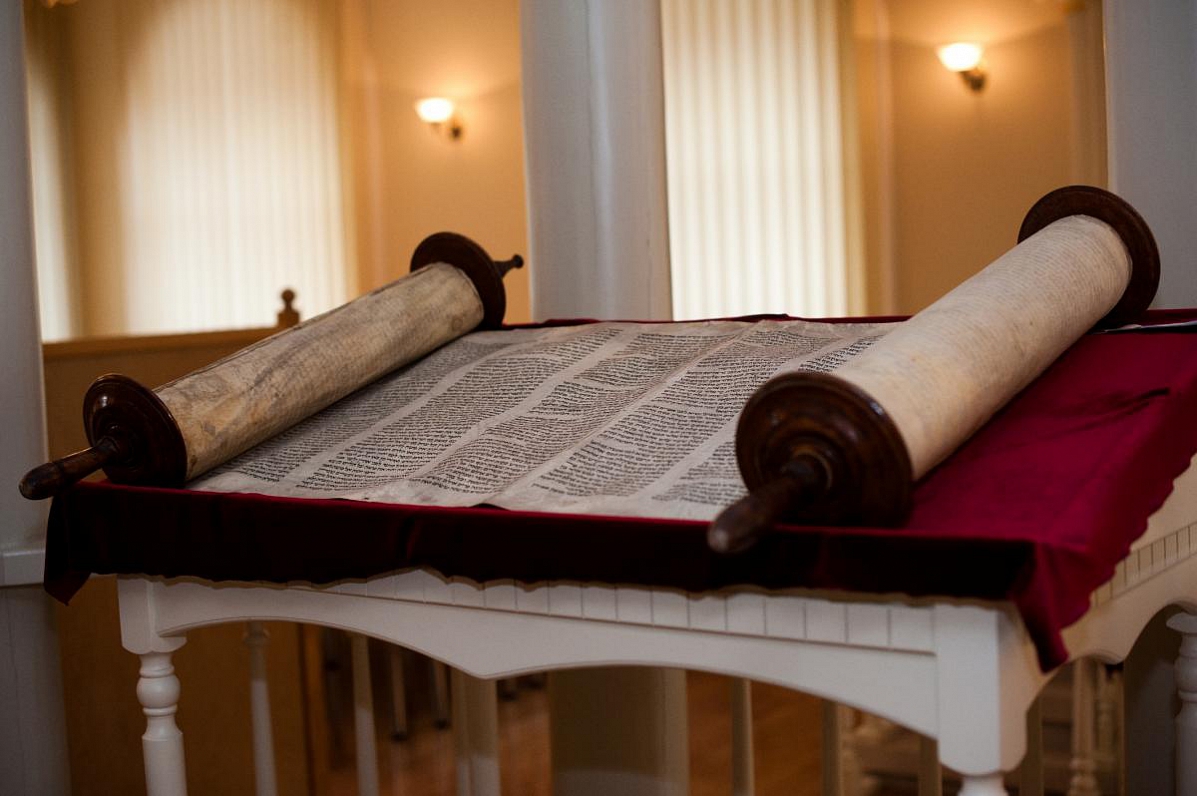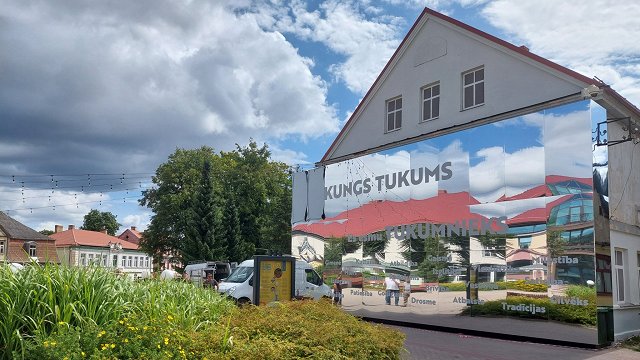A monument, erected in 2003 on the bank of Daugava River, faces the Daugavpils City Council. It celebrates Daugavpils' - historically called Dvinsk, Dinaburg and other names - most famous son, the painter Mark Rothko.
The monument, just like Rothko's paintings, leaves a lot to the imagination: it can conjure a specific story, arouse passion, hatred, become the face of one's loved woman, or bring up the memories of the painter's childhood.

Before the first world war, the Russian public swayed to the rhythms of Oscar Strock's tangos. His father played at the First Dinaburg Theater orchestra.
While the great Soviet Jewish actor and educator Solomon Mikhoels, later assassinated on Stalin's personal orders, also came from Dinaburga. The facade of his birthplace is now fashioned with a memorial plaque.
Iosif Rachko, the head of the Jews of Daugavpils and Latgale, has collected materials about the Jews living in Latgale from the old times up to modernity:
"The oldest of them, rabbi Meir Simcha Katz-Kagan, was born in Dvinsk in 1843. It's said that when Daugavpils was in danger of being flooded due to an ice congestion near the city, believers flocked to this rabbi and asked him to pray so as to prevent a disaster. At first he hadn't wanted to, but later went to the city dam, stood up and prayed," said Iosif Rachko.
According to the witnesses, a terrible crack sounded through the air and the ice started moving, saving the city.
Jews and the October Revolution
It's a little known fact that a Daugavpils surgeon was at one point at the heart--or, rather the brain--of the worldwide proletarian conflagration. Doctor Vladimir Mintz operated on Vladimir Lenin, the leader of the October Revolution, says Iosif Rachko.
"It was a brain operation, which was a rarity back then. He was taking a risk, but the leader of the world's proletariat survived. Afterwards the doctor went to Riga where he worked. Sadly, in 1941 he became a prisoner at the Riga Ghetto and died in Auschwitz in 1945," he said.
While the youngest and most successful female Jew of Latgale was Kseniya Kobyakova, born in 1983. She emigrated to Israel, got an education, served in the army and now is a high-ranking diplomat at Israel's Foreign Ministry.
"She came to Rīga and later Daugavpils. She was able to find many people she knew, people she studied with and talked to, and she spent several years here in Latvia. Nowadays Kseniya is working as the head of the tourism department at Israel's Embassy in Russia and CIS countries," said the director of the museum.
Only a fraction return after second world war
The very first exhibit that greets visitors upon entering the museum is a map of Latvia that shows the number of Jews living in Latgale and Latvia during the second world war. Just two thousand survivors came back to Daugavpils after the war. It was important to them to keep on observing the traditions of their forefathers, said Hono Schperling, a representative of the local Jewish community.

"In 1944 when Jews returned - some from the war, some from the evacuation - they turned to the local authorities asking for a house to pray in - either a praying house or a synagogue. They were given this building, and in 1947 prayers and services started happening here. And this building started serving as a Jewish synagogue," he said.
"I think that Jews, just like people of other nationalities, invested their share in the founding and development of our region and our country," said Iosif Rachko in an interview to LTV7 on May 6, when the Latgale Congress was taking place.
"Just now the melody of Oscar Strock is playing from the speakers, and as it's playing on the centenary celebration, it means we can all be proud of it, the whole country," he said.
"Usually they're saying that Daugavpils' Jewry gave the world Strock, Mikhoels and Mark Rothko. I think that's a modest outlook! Right now our Latgale Central Library is showing an exhibition 'A hundred famous Jews of Daugavpils' where you can see how many people have celebrated the name of Latvia and are proudly carrying it into the world," said Rachko.



























